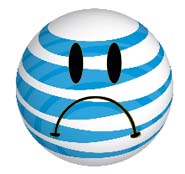 When Microsoft unveiled its Surface tabletop computer two years ago, the company vowed to “break down traditional barriers between people and technology.” The revolution has not happened–yet. Microsoft is expanding Surface into new markets, but adoption has thus far been confined to customers in specific markets.
When Microsoft unveiled its Surface tabletop computer two years ago, the company vowed to “break down traditional barriers between people and technology.” The revolution has not happened–yet. Microsoft is expanding Surface into new markets, but adoption has thus far been confined to customers in specific markets.
Last summer, the company embarked on pilot programs with AT&T and Sheraton Hotels that set specific goals. AT&T wanted to make its retail experience more enjoyable and engaging (selling more products in the process). Sheraton, meanwhile, was attempting to re-brand itself, and wanted to be associated with an innovative product, said Matthew Champagne, director of product management for the Surface team at Microsoft.
The AT&T pilot program ended one month ago, and its Surface units now sit in AT&T’s labs, he said, adding that Sheraton still has Surface deployed at its hotels. Beyond those tests, Microsoft has been targeting automotive dealerships, financial services, health care and hospitality services, and retailers, as well as the public sector.
Today, Surface is available in both the United States and Canada, in addition to 12 new markets in Europe, the Middle East and Africa, Champagne said. However, the question remains: where can you find one in the wild?
Customers remain few in number, but Champagne noted that Surface has had a positive affect on its customers’ bottom line. The i-Bar in Harrah’s Rio Las Vegas casino experienced an 19% increase in sales after it deployed Surface, and Barclay’s Bank at Piccadilly Circus in the UK experienced a 50% increase in sales for one product through Surface, he said.
Other deployments can be found at Bank of America in Charlotte, NC (another pilot), and Cook Children’s Health System in Fort Worth, TX. Cook’s is using Surface to rehabilitate patients through interactions with objects and the PC’s ability to recognize them, he said.
First responders used Surface to coordinate their efforts at the 2009 Super Bowl in Tampa, FL. In that instance, Surface was integrated with mapping technology to provide authorities with a bird’s eye view of incidents that required their attention.
While Champagne did not say what new form factors Microsoft would introduce in the future, he did not rule it out smaller versions of Surface, saying that it would be a “natural progression” of the technology to become miniaturized.
Additionally, the company now has nearly 200 partners in the Surface ecosystem helping Microsoft to design new interaction roles for applications that leverage multi-touch, he added.
According to a recent BBC report, the next generation of the technology will not surface for another two to three years. It’s also possible that Microsoft is preparing a consumer version that would cost between $5,000-$10,000. (Current Surface setups typically cost $10,000.)
Surface could introduce a new paradigm for computing to the living room, but its cost remains prohibitive. It will be years before the typical household has computerized furniture a la Star Trek, but I believe that Microsoft has been pragmatic enough with its expectations for the technology that Surface will be around when that does happen.
 Waiting in line for an iPhone is a wonderful experience. You get to be one of the first people on the planet to own a hot new toy. You meet your fellow gadget enthusiasts. Apple has been known to dole out free Starbucks and bottled water, and even the occasional T-shirt. Did I mention the fresh air and opportunity to see the sun rise?
Waiting in line for an iPhone is a wonderful experience. You get to be one of the first people on the planet to own a hot new toy. You meet your fellow gadget enthusiasts. Apple has been known to dole out free Starbucks and bottled water, and even the occasional T-shirt. Did I mention the fresh air and opportunity to see the sun rise?
 AT&T is trying to make the case for exclusive deals for phones, saying they “stimulate” innovation. Yes, you heard that right: by sticking it to the consumer and forcing them to a certain carrier, we’re enjoying innovative products. I’m not exactly following this, and neither is Capitol Hill either.
AT&T is trying to make the case for exclusive deals for phones, saying they “stimulate” innovation. Yes, you heard that right: by sticking it to the consumer and forcing them to a certain carrier, we’re enjoying innovative products. I’m not exactly following this, and neither is Capitol Hill either. Finally, news involving AT&T and iPhones that won’t cause anyone to become violently angry! Faced with widespread grumbling by iPhone 3G owners who thought that they deserved to be able to upgrade to the iPhone 3G S for the same price as new customers, the company has rethought its pricing plan. Some customers–ones who spend more on service plans, apparently–
Finally, news involving AT&T and iPhones that won’t cause anyone to become violently angry! Faced with widespread grumbling by iPhone 3G owners who thought that they deserved to be able to upgrade to the iPhone 3G S for the same price as new customers, the company has rethought its pricing plan. Some customers–ones who spend more on service plans, apparently– Wow. My post contending that
Wow. My post contending that  The
The  If you ask Apple or AT&T how much the iPhone 3G S costs, they’ll emphasize two prices: $199 for the 16GB version and $299 for the 32GB one, as
If you ask Apple or AT&T how much the iPhone 3G S costs, they’ll emphasize two prices: $199 for the 16GB version and $299 for the 32GB one, as  Sell yourself, Yahoo. Or don’t.
Sell yourself, Yahoo. Or don’t. When
When